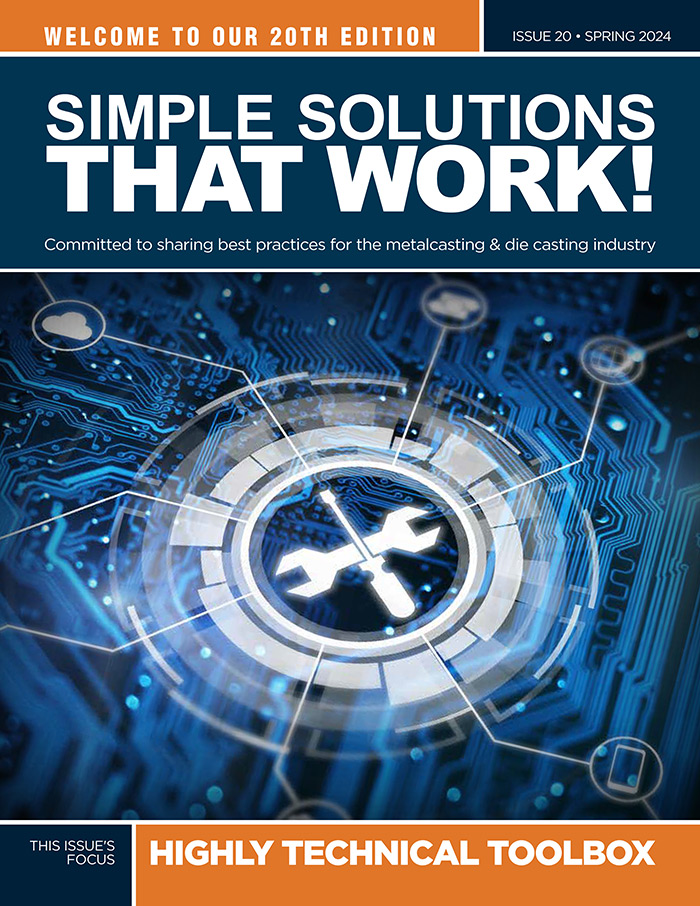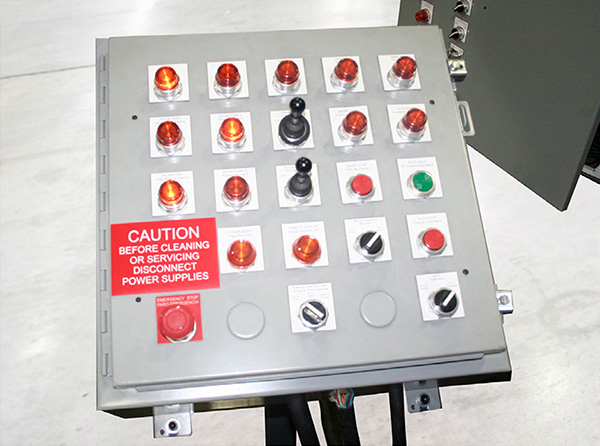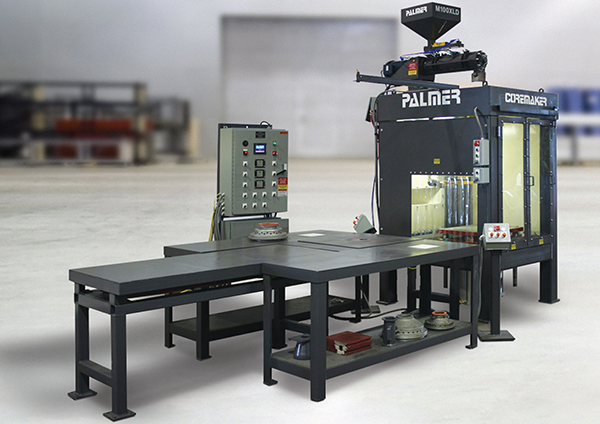Foundry & industrial processing Machinery EQUIPMENT & SYSTEMS
U.S. & Canada Call 1.800.457.5456
Improve Production By Upgrading Existing Equipment
Home Articles Improve Production By Upgrading Existing Equipment

Simple Solutions That Work!™, Volume 20, April. 2024
Written - Jack Palmer
Jack Palmer
President
Palmer Manufacturing & Supply, Inc.
ARTICLE TAKEAWAYS:
Whether you are a jobbing foundry or a global mega-foundry, turning to your suppliers to ask how to quickly increase production using your current equipment, is a common request. And, as castings gets bigger and more complex, we expect requests like this to only grow. While many in this publication will be sharing the latest plant-wide technologies with the same goal, our article is to remind everyone of the relatively low cost and proven technologies that are readily available especially for standalone equipment or smaller systems.
While perhaps not as sexy as foundrywide Industrial 4.0 implementations, we often find that the easiest way to increase production using existing equipment is by simply upgrading its features. Foundry equipment is by far the toughest in the land; so before you replace the workhorses of your foundry (mixers, sand reclaimers, elevators, handlers) think about ‘what’s falling short.’ Odds are mechanically the equipment is still functioning at a high level and it’s the controls, sensors, or pumps, that are not keeping up with what’s needed in your production today.
Retrofitting sturdy equipment with new pumps, control panels, and discharge systems can produce enormous results. When production changes (more often bigger) the floor space magically shrinks. All of a sudden bigger equipment needs to be supported by existing smaller machines that no longer have access to the sand/resin supply, the core room, molding carousel and more.

More often than not, adding new equipment for increased production tends to be larger in size, and typically presents a problem in regards to the sand supply location. We always remind operators that using an existing shuttle car with upgraded controls is often an ideal way to deliver sand to the core machines because the operator only calls for it when its needed. This type of quick fix, did more than meet an immediate need by integrating new equipment with existing equipment, it also enhanced the production process by giving the operator better control.
Operator control of multiple resin storage locations can easily result in running out of resin at the wrong time. Replacing control panels with state-of-the art pumping systems including monitoring systems to each mixer often solves this.
Replacing control panels with state of the art pumping systems including monitoring systems to each mixer often solves this.
Struggling with recipe errors and resulting waste? Installing a new control panel and pumping system on the mixer with RFID recipe and batching technology is a stellar way to eliminate the problems associated with relying on the operator to ensure the correct recipe is being used.

RFID is not only an affordable way to ensure high quality production, over the years, it has only become better. Foundries especially will appreciate that RFID is not new and has proven itself over and over again. There is always comfort in knowing the technology you are deploying has been successfully integrated in hundreds of facilities.
RFID is a programmable (read/ write) identification system that stores and retrieves data, using radio frequency identification tags. The tags are fastened to your equipment, parts inventory or in production—to your mold and core boxes. The tags communicate wirelessly with the tag to the data. Your data can include mixer run time, resin percentages and ratios, additives, as well as compaction table vibration settings. The production data can also be incorporated into your companywide system. You can easily start small with RFID and grow with it very cost effectively.
RFID, in comparison to other technologies is not as expensive nor difficult to deploy, and you can see the results on a smaller scale before you elect to go plant-wide. Of all of the ways you could reduce human errors and increase quality that is repeatable, RFID has to be one of the easiest to deploy in core and mold making, and see immediate results.
The process of adding a tag and attaching it to the bottom of each core or mold box is easy. The tags (compliant with ISO 18000-3, ISO 15693, and ISO 14443 standards) each have a unique identification number that is read when the box is presented to the core machine. Then, during set-up the workers enters the setting for that particular core into the PLC. Once that setting is entered, it is saved permanently for that recipe.
Especially in our current labor shortage market, the labor savings benefits of RFID are easily understood. However, RFID really manages your quality control system by ensuring the machine settings and the correct recipe are being used. Foundries using RFID report that their increase in quality castings has also naturally reduced their defects/ scrap, which has allowed them to compete with reduced prices. They also report that a RFID system is simply more productive.
Sometimes just looking at your core or mold making challenges can produce solutions to increase production and casting quality by simply upgrading features to your existing equipment while reducing scrap and human errors at the same time.
Copyright © 2024 Palmer Manufacturing & Supply, Inc. | Terms and Conditions | Privacy Policy
Web published by Marketing Options, LLC.




